"Life consists of propositions about life."
— Wallace Stevens ("Men Made Out Of Words")

"I just read the Life transcript book and it is fantastic. One of the better books I've read in a while. Super rich, high signal to noise, great subject."
— Kevin Kelly, Editor-At-Large, Wired
"The more I think about it the more I'm convinced that Life: What A Concept! was one of those memorable events that people in years to come will see as a crucial moment in history. After all, it's where the dawning of the age of biology was officially announced."
— Andrian Kreye, Süddeutsche Zeitung
EDGE PUBLISHES "LIFE: WHAT A CONCEPT!" TRANSCRIPT AS DOWNLOADABLE PDF BOOK [1.14.08]
Edge is pleased to announce the online publication of the complete transcript of this summer's Edge event, Life: What a Concept! as a 43,000- word downloadable PDF Edgebook.
The event took place at Eastover Farm in Bethlehem, CT on Monday, August 27th (see below). Invited to address the topic "Life: What a Concept!" were Freeman Dyson, J. Craig Venter, George Church, Robert Shapiro, Dimitar Sasselov, and Seth Lloyd, who focused on their new, and in more than a few cases, startling research, and/or ideas in the biological sciences.
Reporting on the August event, Andrian Kreye, Feuilleton (Arts & Ideas) Editor of Süddeutsche Zeitung wrote:
Soon genetic engineering will shape our daily life to the same extent that computers do today. This sounds like science fiction, but it is already reality in science. Thus genetic engineer George Church talks about the biological building blocks that he is able to synthetically manufacture. It is only a matter of time until we will be able to manufacture organisms that can self-reproduce, he claims. Most notably J. Craig Venter succeeded in introducing a copy of a DNA-based chromosome into a cell, which from then on was controlled by that strand of DNA.
Jordan Mejias, Arts Correspondent of Frankfurter Allgemeine Zeitung, noted that:
These are thoughts to make jaws drop...Nobody at Eastover Farm seemed afraid of a eugenic revival. What in German circles would have released violent controversies, here drifts by unopposed under mighty maple trees that gently whisper in the breeze.
The following Edge feature on the "Life: What a Concept!" August event includes a photo album; streaming video; and html files of each of the individual talks.
In April, Dennis Overbye, writing in the New York Times "Science Times," broke the story of the discovery by Dimitar Sasselov and his colleagues of five earth-like exo-planets, one of which "might be the first habitable planet outside the solar system."
At the end of June, Craig Venter has announced the results of his lab's work on genome transplantation methods that allows for the transformation of one type of bacteria into another, dictated by the transplanted chromosome. In other words, one species becomes another. In talking to Edge about the research, Venter noted the following:
Now we know we can boot up a chromosome system. It doesn't matter if the DNA is chemically made in a cell or made in a test tube. Until this development, if you made a synthetic chomosome you had the question of what do you do with it. Replacing the chomosome with existing cells, if it works, seems the most effective to way to replace one already in an existing cell systems. We didn't know if it would work or not. Now we do. This is a major advance in the field of synthetic genomics. We now know we can create a synthetic organism. It's not a question of 'if', or 'how', but 'when', and in this regard, think weeks and months, not years.
In July, in an interesting and provocative essay in New York Review of Books entitled "Our Biotech Future," Freeman Dyson wrote:
The Darwinian interlude has lasted for two or three billion years. It probably slowed down the pace of evolution considerably. The basic biochemical machinery o life had evolved rapidly during the few hundreds of millions of years of the pre-Darwinian era, and changed very little in the next two billion years of microbial evolution. Darwinian evolution is slow because individual species, once established evolve very little. With rare exceptions, Darwinian evolution requires established species to become extinct so that new species can replace them.
Now, after three billion years, the Darwinian interlude is over. It was an interlude between two periods of horizontal gene transfer. The epoch of Darwinian evolution based on competition between species ended about ten thousand years ago, when a single species, Homo sapiens, began to dominate and reorganize the biosphere. Since that time, cultural evolution has replaced biological evolution as the main driving force of change. Cultural evolution is not Darwinian. Cultures spread by horizontal transfer of ideas more than by genetic inheritance. Cultural evolution is running a thousand times faster than Darwinian evolution, taking us into a new era of cultural interdependence which we call globalization. And now, as Homo sapiens domesticates the new biotechnology, we are reviving the ancient pre-Darwinian practice of horizontal gene transfer, moving genes easily from microbes to plants and animals, blurring the boundaries between species. We are moving rapidly into the post-Darwinian era, when species other than our own will no longer exist, and the rules of Open Source sharing will be extended from the exchange of software to the exchange of genes. Then the evolution of life will once again be communal, as it was in the good old days before separate species and intellectual property were invented.
It's clear from these developments as well as others, that we are at the end of one empirical road and ready for adventures that will lead us into new realms.
This year's Annual Edge Event took place at Eastover Farm in Bethlehem, CT on Monday, August 27th. Invited to address the topic "Life: What a Concept!" were Freeman Dyson, J. Craig Venter, George Church, Robert Shapiro, Dimitar Sasselov, and Seth Lloyd, who focused on their new, and in more than a few cases, startling research, and/or ideas in the biological sciences.
Physicist Freeman Dyson envisions a biotech future which supplants physics and notes that after three billion years, the Darwinian interlude is over. He refers to an interlude between two periods of horizontal gene transfer, a subject explored in his abovementioned essay.
Craig Venter, who decoded the human genome, surprised the world in late June by announcing the results of his lab's work on genome transplantation methods that allows for the transformation of one type of bacteria into another, dictated by the transplanted chromosome. In other words, one species becomes another.
George Church, the pioneer of the Synthetic Biology revolution, thinks of the cell as operating system, and engineers taking the place of traditional biologists in retooling stripped down components of cells (bio-bricks) in much the vein as in the late 70s when electrical engineers were working their way to the first personal computer by assembling circuit boards, hard drives, monitors, etc.
Biologist Robert Shapiro disagrees with scientists who believe that an extreme stroke of luck was needed to get life started in a non-living environment. He favors the idea that life arose through the normal operation of the laws of physics and chemistry. If he is right, then life may be widespread in the cosmos.
Dimitar Sasselov, Planetary Astrophysicist, and Director of the Harvard Origins of Life Initiative, has made recent discoveries of exo-planets ("Super-Earths"). He looks at new evidence to explore the question of how chemical systems become living systems.
Quantum engineer Seth Lloyd sees the universe as an information processing system in which simple systems such as atoms and molecules must necessarily give rise complex structures such as life, and life itself must give rise to even greater complexity, such as human beings, societies, and whatever comes next.
A small group of journalists interested in the kind of issues that are explored on Edge were present: Corey Powell, Discover, Jordan Mejias, Frankfurter Allgemeine Zeitung, Heidi Ledford, Nature, Greg Huang, New Scientist, Deborah Treisman, New Yorker, Edward Rothstein, The New York Times, Andrian Kreye, Süddeutsche Zeitung, Antonio Regalado, Wall Street Journal. Guests included Heather Kowalski, The J. Craig Venter Institute, Ting Wu, The Wu Lab, Harvard Medical School, and the artist Stephanie Rudloe. Attending for Edge: Katinka Matson, Russell Weinberger, Max Brockman, and Karla Taylor.
We are witnessing a point in which the empirical has intersected with the epistemological: everything becomes new, everything is up for grabs. Big questions are being asked, questions that affect the lives of everyone on the planet. And don't even try to talk about religion: the gods are gone.
Following the theme of new technologies=new perceptions, I asked the speakers to take a third culture slant in the proceedings and explore not only the science but the potential for changes in the intellectual landscape as well.
We are pleased to present the transcripts of the talks and conversation along with streaming video clips (links below).
— JB
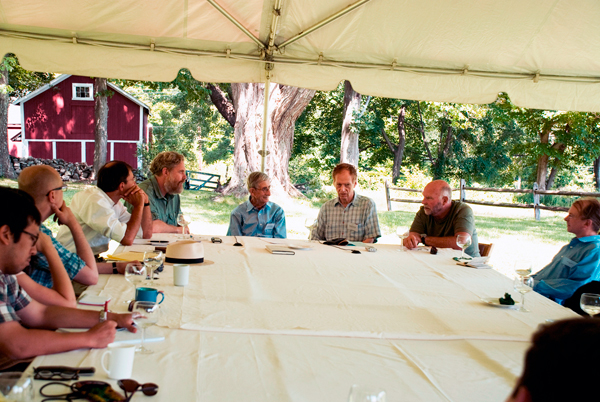
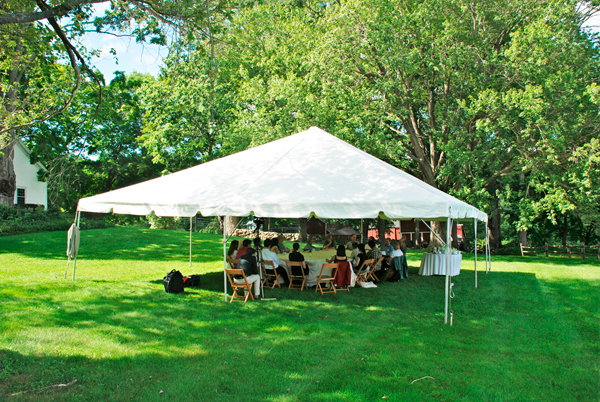
FREEMAN DYSON
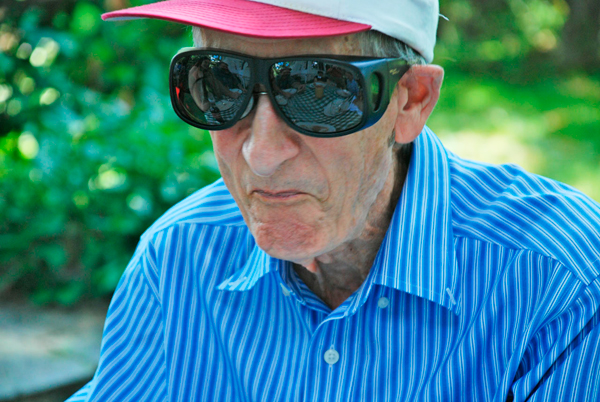
The essential idea is that you separate metabolism from replication. We know modern life has both metabolism and replication, but they're carried out by separate groups of molecules. Metabolism is carried out by proteins and all kinds of other molecules, and replication is carried out by DNA and RNA. That maybe is a clue to the fact that they started out separate rather than together. So my version of the origin of life is that it started with metabolism only.
FREEMAN DYSON: First of all I wanted to talk a bit about origin of life. To me the most interesting question in biology has always been how it all got started. That has been a hobby of mine. We're all equally ignorant, as far as I can see. That's why somebody like me can pretend to be an expert.
I was struck by the picture of early life that appeared in Carl Woese's article three years ago. He had this picture of the pre-Darwinian epoch when genetic information was open source and everything was shared between different organisms. That picture fits very nicely with my speculative version of origin of life.
The essential idea is that you separate metabolism from replication. We know modern life has both metabolism and replication, but they're carried out by separate groups of molecules. Metabolism is carried out by proteins and all kinds of small molecules, and replication is carried out by DNA and RNA. That maybe is a clue to the fact that they started out separate rather than together. So my version of the origin of life is it started with metabolism only. ...
___
FREEMAN DYSON is professor of physics at the Institute for Advanced Study, in Princeton. His professional interests are in mathematics and astronomy. Among his many books are Disturbing the Universe, Infinite in All Directions Origins of Life, From Eros to Gaia, Imagined Worlds, The Sun, the Genome, and the Internet, and most recently A Many Colored Glass: Reflections on the Place of Life in the Universe.
CRAIG VENTER

I have come to think of life in much more a gene-centric view than even a genome-centric view, although it kind of oscillates. And when we talk about the transplant work, genome-centric becomes more important than gene-centric. From the first third of the Sorcerer II expedition we discovered roughly 6 million new genes that has doubled the number in the public databases when we put them in a few months ago, and in 2008 we are likely to double that entire number again. We're just at the tip of the iceberg of what the divergence is on this planet. We are in a linear phase of gene discovery maybe in a linear phase of unique biological entities if you call those species, discovery, and I think eventually we can have databases that represent the gene repertoire of our planet.
One question is, can we extrapolate back from this data set to describe the most recent common ancestor. I don't necessarily buy that there is a single ancestor. It’s counterintuitive to me. I think we may have thousands of recent common ancestors and they are not necessarily so common.
J. CRAIG VENTER: Seth's statement about digitization is basically what I've spent the last fifteen years of my career doing, digitizing biology. That's what DNA sequencing has been about. I view biology as an analog world that DNA sequencing has taking into the digital world . I'll talk about some of the observations that we have made for a few minutes, and then I will talk about once we can read the genetic code, we've now started the phase where we can write it. And how that is going to be the end of Darwinism.
On the reading side, some of you have heard of our Sorcerer II expedition for the last few years where we've been just shotgun sequencing the ocean. We've just applied the same tools we developed for sequencing the human genome to the environment, and we could apply it to any environment; we could dig up some soil here, or take water from the pond, and discover biology at a scale that people really have not even imagined.
The world of microbiology as we've come to know it is based on over a hundred year old technology of seeing what will grow in culture. Only about a tenth of a percent of microbiological organisms, will grow in the lab using traditional techniques. We decided to go straight to the DNA world to shotgun sequence what's there; using very simple techniques of filtering seawater into different size fractions, and sequencing everything at once that's in the fractions. ...
___
J. CRAIG VENTER is one of leading scientists of the 21st century for his visionary contributions in genomic research. He is founder and president of the J. Craig Venter Institute. The Venter Institute conducts basic research that advances the science of genomics; specializes inhuman genome based medicine, infectious disease, environmental genomics and synthetic genomics and synthetic life, and explores the ethical and policy implications of genomic discoveries and advances. The Venter Institute employes more than 400 scientist and staff in Rockville, Md and in La Jolla, Ca. He is the author of A Life Decoded: My Genome: My Life.
GEORGE CHURCH
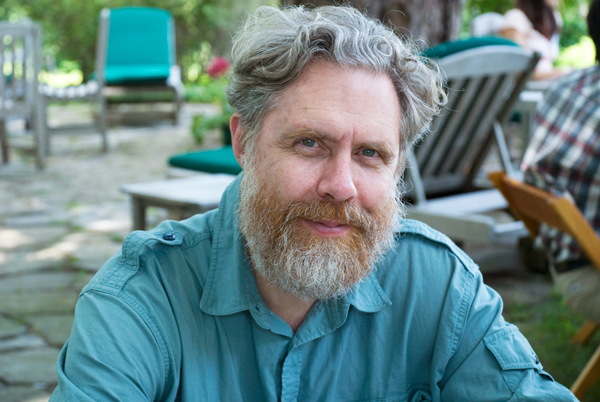
Many of the people here worry about what life is, but maybe in a slightly more general way, not just ribosomes, but inorganic life. Would we know it if we saw it? It's important as we go and discover other worlds, as we start creating more complicated robots, and so forth, to know, where do we draw the line?
GEORGE CHURCH: We've heard a little bit about the ancient past of biology, and possible futures, and I'd like to frame what I'm talking about in terms of four subjects that elaborate on that. In terms of past and future, what have we learned from the past, how does that help us design the future, what would we like it to do in the future, how do we know what we should be doing? This sounds like a moral or ethical issue, but it's actually a very practical one too.
One of the things we've learned from the past is that diversity and dispersion are good. How do we inject that into a technological context? That brings the second topic, which is, if we're going to do something, if we have some idea what direction we want to go in, what sort of useful constructions we would like to make, say with biology, what would those useful constructs be? By useful we might mean that the benefits outweigh the costs — and the risks. Not simply costs, you have to have risks, and humans as a species have trouble estimating the long tails of some of the risks, which have big consequences and unintended consequences. So that's utility. 1) What we learn from the future and the past 2) the utility 3) kind of a generalization of life.
Many of the people here worry about what life is, but maybe in a slightly more general way, not just ribosomes, but inorganic life. Would we know it if we saw it? It's important as we go and discover other worlds, as we start creating more complicated robots, and so forth, to know, where do we draw the line? I think that's interesting. And then finally — that's kind of generalizational life, at a basic level — but 4) the kind of life that we are particularly enamored of — partly because of egocentricity, but also for very philosophical reasons — is intelligent life. But how do we talk about that? ...
___
GEORGE CHURCH is Professor of Genetics at Harvard Medical School and Director of the Center for Computational Genetics. He invented the broadly applied concepts of molecular multiplexing and tags, homologous recombination methods, and array DNA synthesizers. Technology transfer of automated sequencing & software to Genome Therapeutics Corp. resulted in the first commercial genome sequence (the human pathogen, H. pylori,1994). He has served in advisory roles for 12 journals, 5 granting agencies and 22 biotech companies. Current research focuses on integrating biosystems-modeling with personal genomics & synthetic biology.
ROBERT SHAPIRO

I looked at the papers published on the origin of life and decided that it was absurd that the thought of nature of its own volition putting together a DNA or an RNA molecule was unbelievable.
I'm always running out of metaphors to try and explain what the difficulty is. But suppose you took Scrabble sets, or any word game sets, blocks with letters, containing every language on Earth, and you heap them together and you then took a scoop and you scooped into that heap, and you flung it out on the lawn there, and the letters fell into a line which contained the words “To be or not to be, that is the question,” that is roughly the odds of an RNA molecule, given no feedback — and there would be no feedback, because it wouldn't be functional until it attained a certain length and could copy itself — appearing on the Earth.
ROBERT SHAPIRO: I was originally an organic chemist — perhaps the only one of the six of us — and worked in the field of organic synthesis, and then I got my PhD, which was in 1959, believe it or not. I had realized that there was a lot of action in Cambridge, England, which was basically organic chemistry, and I went to work with a gentleman named Alexander Todd, promoted eventually to Lord Todd, and I published one paper with him, which was the closest I ever got to the Lord. I then spent decades running a laboratory in DNA chemistry, and so many people were working on DNA synthesis — which has been put to good use as you can see — that I decided to do the opposite, and studied the chemistry of how DNA could be kicked to Hell by environmental agents. Among the most lethal environmental agents I discovered for DNA — pardon me, I'm about to imbibe it — was water. Because water does nasty things to DNA. For example, there's a process I heard you mention called DNA animation, where it kicks off part of the coding part of DNA from the units — that was discovered in my laboratory.
Another thing water does is help the information units fall off of DNA, which is called depurination and ought to apply only one of the subunits — but works under physiological conditions for the pyrimidines as well, and I helped elaborate the mechanism by which water helped destroy that part of DNA structure. I realized what a fragile and vulnerable molecule it was, even if was the center of Earth life. After water, or competing with water, the other thing that really does damage to DNA, that is very much the center of hot research now — again I can't tell you to stop using it — is oxygen. If you don't drink the water and don't breathe the air, as Tom Lehrer used to say, and you should be perfectly safe. ...
___
ROBERT SHAPIRO is professor emeritus of chemistry and senior research scientist at New York University. He has written four books for the general public: Life Beyond Earth (with Gerald Feinberg); Origins, a Skeptic's Guide to the Creation of Life on Earth; The Human Blueprint (on the effort to read the human genome); and Planetary Dreams (on the search for life in our Solar System).
DIMITAR SASSELOV
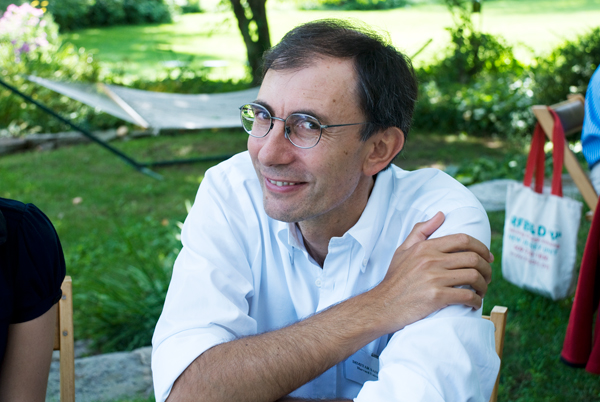
Is Earth the ideal planet for life? What is the future of life in our universe? We often imagine our place in the universe in the same way we experience our lives and the places we inhabit. We imagine a practically static eternal universe where we, and life in general, are born, grow up, and mature; we are merely one of numerous generations.
This is so untrue! We now know that the universe is 14 and Earth life is 4 billion years old: life and the universe are almost peers. If the universe were a 55-year old, life would be a 16-year old teenager. The universe is nowhere close to being static and unchanging either.
Together with this realization of our changing universe, we are now facing a second, seemingly unrelated realization: there is a new kind of planet out there which have been named super-Earths, that can provide to life all that our little Earth does. And more.
DIMITAR SASSELOV: I will start the same way, by introducing my background. I am a physicist, just like Freeman and Seth, in background, but my expertise is astrophysics, and more particularly planetary astrophysics. So that means I'm here to try to tell you a little bit of what's new in the big picture, and also to warn you that my background basically means that I'm looking for general relationships — for generalities rather than specific answers to the questions that we are discussing here today.
So, for example, I am personally more interested in the question of the origins of life, rather than the origin of life. What I mean by that is I'm trying to understand what we could learn about pathways to life, or pathways to the complex chemistry that we recognize as life. As opposed to narrowly answering the question of what is the origin of life on this planet. And that's not to say there is more value in one or the other; it's just the approach that somebody with my background would naturally try to take. And also the approach, which — I would agree to some extent with what was said already — is in need of more research and has some promise.
One of the reasons why I think there are a lot of interesting new things coming from that perspective, that is from the cosmic perspective, or planetary perspective, is because we have a lot more evidence for what is out there in the universe than we did even a few years ago. So to some extent, what I want to tell you here is some of this new evidence and why is it so exciting, in being able to actually inform what we are discussing here. ...
___
DIMITAR SASSELOV is Professor of Astronomy at Harvard University and Director, Harvard Origins of Life Initiative. Most recently his research has led him to explore the nature of planets orbiting other stars. Using novel techniques, he has discovered a few such planets, and his hope is to use these techniques to find planets like Earth. He is the founder and director of the new Harvard Origins of Life Initiative, a multidisciplinary center bridging scientists in the physical and in the life sciences, intent to study the transition from chemistry to life and its place in the context of the Universe.
Dimitar Sasselov's Edge Bio Page
SETH LLOYD
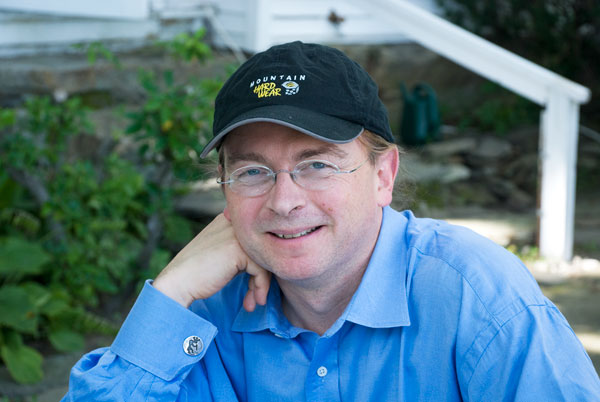
If you program a computer at random, it will start producing other computers, other ways of computing, other more complicated, composite ways of computing. And here is where life shows up. Because the universe is already computing from the very beginning when it starts, starting from the Big Bang, as soon as elementary particles show up. Then it starts exploring — I'm sorry to have to use anthropomorphic language about this, I'm not imputing any kind of actual intent to the universe as a whole, but I have to use it for this to describe it — it starts to explore other ways of computing.
SETH LLOYD: I'd like to step back from talking about life itself. Instead I'd like to talk about what information processing in the universe can tell us about things like life. There's something rather mysterious about the universe. Not just rather mysterious, extremely mysterious. At bottom, the laws of physics are very simple. You can write them down on the back of a T-shirt: I see them written on the backs of T-shirts at MIT all the time, even in size petite. IN addition to that, the initial state of the universe, from what we can tell from observation, was also extremely simple. It can be described by a very few bits of information.
So we have simple laws and simple initial conditions. Yet if you look around you right now you see a huge amount of complexity. I see a bunch of human beings, each of whom is at least as complex as I am. I see trees and plants, I see cars, and as a mechanical engineer, I have to pay attention to cars. The world is extremely complex.
If you look up at the heavens, the heavens are no longer very uniform. There are clusters of galaxies and galaxies and stars and all sorts of different kinds of planets and super-earths and sub-earths, and super-humans and sub-humans, no doubt. The question is, what in the heck happened? Who ordered that? Where did this come from? Why is the universe complex? Because normally you would think, okay, I start off with very simple initial conditions and very simple laws, and then I should get something that's simple. In fact, mathematical definitions of complexity like algorithmic information say, simple laws, simple initial conditions, imply the state is always simple. It's kind of bizarre. So what is it about the universe that makes it complex, that makes it spontaneously generate complexity? I'm not going to talk about super-natural explanations. What are natural explanations — scientific explanations of our universe and why it generates complexity, including complex things like life? ...
___
SETH LLOYD is Professor of Mechanical Engineering at MIT and Director of the W.M. Keck Center for Extreme Quantum Information Theory (xQIT). He works on problems having to do with information and complex systems from the very small—how do atoms process information, how can you make them compute, to the very large — how does society process information? And how can we understand society in terms of its ability to process information? He is the author if Programming the Universe: A Quantum Computer Scientist Takes On the Cosmos.


FRANKFURTER
August 31,.2007
FEUILLETON — Front Page

Let's play God!; Life's questions: J. Craig Venter programs the future(Lasst uns Gott spielen!)By Jordan Mejias
Was Evolution only an interlude? At the invitation of John Brockman, science luminaries such as J. Craig Venter, Freeman Dyson, Seth Lloyd, Robert Shapiro and others discussed the question: What is Life?
EASTOVER FARM, August 30th
It sounds like seaman's yarn that the scientist with the look of an experienced seafarer has in store for us. The suntanned adventurer with the close-clipped grey beard vaunts the ocean as a sea of bacteria and viruses, unimaginable in their varieties. And in their lifestyle, as we might call it. But what do organisms live off? Like man, not off air or love alone. There can be no life without nutrients, it is said. Not true, says the sea dog. Sometimes a source of energy is enough, for instance, when energy is abundantly provided by sunlight. Could that teach us anything about our very special form of life?
J. Craig Venter, the ingenious decoder of the genome, who takes time off to sail around the world on expeditions, balances his flip-flops on his naked feet as he tells us about such astounding phenomena of life. Us, that means a few hand-picked journalists and half a dozen stars of science, invited by John Brockman, the Guru of the all encompassing "Third Culture", to his farm in Connecticut.
Relaxed, always open for a witty remark, but nevertheless with the indispensable seriousness, the scientific luminaries go to work under Brockman's direction. He, the master of the easy, direct question that unfailingly draws out the most complicated answers, the hottest speculations and debates, has for today transferred his virtual salon, always accessible on the Internet under the name Edge, to a very real and idyllic summer's day. This time the subject matter is nothing other than life itself.
When Venter speaks of life, it's almost as if he were reading from the script of a highly elaborate Science Fiction film. We are told to imagine organisms that not only can survive dangerous radiations, but that remain hale and hearty as they journey through the Universe. Still, he of all people, the revolutionary geneticist, warns against setting off in an overly gene-centric direction when trying to track down Life. For the way in which a gene makes itself known, will depend to a large degree upon the aid of overlooked transporter genes. In spite of this he considers the genetic code a better instrument to organize living organisms than the conventional system of classification by species.
Many colleagues nod in agreement, when they are not smiling in agreement. But this cannot be all that Venter has up his sleeve. Just a short while ago, he created a stir with the announcement that his Institute had succeeded in transplanting the genome of one bacterium into another. With this, he had newly programmed an organism. Should he be allowed to do this? A question not only for scientists. Eastover Farm was lacking in ethicists, philosophers and theologians, but Venter had taken precautions. He took a year to learn from the world's large religions whether it was permissible to synthesize life in the lab. Not a single religious representative could find grounds to object. All essentially agreed: It's okay to play God.
Maybe some of the participants would have liked to hear more on the subject, but the day in Nature's lap was for identifying themes, not giving and receiving exhaustive amounts of information. A whiff of the most breathtaking visions, both good and bad, was enough. There were already frightening hues in the ultimate identity theft, to which Venter admitted with his genome exchange. What if a cell were captured by foreign DNA? Wouldn't it be a nightmare in the shape of a genuine Darwinian victory of the strong over the weak? Venter was applying dark colors here, whereas Freeman Dyson had painted us a much more mellow picture of the future.
Dyson, the great, not yet quite eighty-four year old youngster, physicist and futurist, regards evolution as an interlude. According to his calculations, the competition between species has gone on for just three billion years. Before that, according to Dyson, living organisms participated in horizontal gene transfers; if you will, they preferred the peaceful exchange of information among themselves. In the ten thousand years since Homo sapiens conquered the biosphere, Dyson once again sees a return of the old Modus Operandi, although in a modified form.
The scenario goes as follows: Cultural evolution, characterized by the transfer of ideas, has replaced the much slower biological evolution. Today, ideas, not genes, tip the scales. In availing himself of biotechnology, Man has picked up the torn pre-evolutionary thread and revived the genetic back and forth between microbes, plants and animals. Bit by bit the borders between species are disappearing. Soon only one species will remain, namely the genetically modified human, while the rules of Open Source, which guarantee the unhindered exchange of software in computers, will also apply to the exchange of genes. The evolution of life, in nutshell, will return soon to a state of agreeable unity, as it existed in good old pre-Darwinian times, when life had not yet been separated into distinct species.
Though Venter may not trust in this future peace, he nearly matches Dyson in his futuristic enthusiasm. But he is enough of a realist to stress that he has never talked of creating new life from scratch. He is confident that he can develop new species and life forms, but will always have to rely on existing materials that he finds. Even he cannot conjure a cell out of nothing. So far, so good and so humble.
The rest is sheer bravado. He considers manipulation of human genes not only possible, but desirable. There's no question that he will continue to disappoint the inmate who once asked him to fashion an attractive cellmate, just as he refused the wish of an unsavory gentleman who yearned for mentally underdeveloped working-class people. But, Venter asks, who can object to humans having genetically beefed-up Intelligence? Or to new genomes that open the door to new, undreamt-of sources of bio fuel? Nobody at Eastover Farm seemed afraid of a eugenic revival. What in German circles would have released violent controversies, here drifts by unopposed under mighty maple trees that gently whisper in the breeze.
All the same, Venter does confess that such life transforming technology, more powerful than any, humanity could harness until now, inevitably plunges him in doubt, particularly when looking back on human history. Still, he looks toward the future with hope and confidence. As does George Church, the molecular geneticist from Harvard, who wouldn't be surprised if a future computer would be able outperform the human brain. Could resourcefully mixed DNA be helpful to us? The organic chemist Robert Shapiro, Emeritus of New York University, objects strongly to viewing DNA as a monopolistic force. Will he assure us, that life consists of more than DNA? But of what? Is it conceivable that there are certain forms of life we still are unable to recognize? Who wants to confirm that nothing runs without DNA? Why should life not also arise from minerals???These are thoughts to make jaws drop, not only among laymen. Venter also is concerned that Shapiro defines life all too loosely. But both, the geneticist and the chemist focus on the moment at which life is breathed into an inanimate object. This will be, in Venter's opinion, the next milestone in the investigation and conditioning of life. We can no longer beat around the bush: What is Life? Venter declines to answer, he doesn't want to be drawn into philosophical bullshit, as he says. Is a virus a life form? Must life, in order to be recognized as life, be self-reproducing? A colorful butterfly glides through the debate. Life can appear so weightless. And it is so difficult to describe and define.
Seth Lloyd, the quantum mechanic from MIT points out mischievously that we know far more about the origin of the universe than we do about the origin of life. Using the quantum computer as his departing point, he tries to give us an idea of the huge number of possibilities out of which life could have developed. If Albert Einstein did not wish to envisage a dice-playing god, Lloyd, the entertaining thinker, can't help to see only dice-playing, though presumably without the assistance of god. Everything reveals itself in his life panorama as a result of chance, whether here on Earth or in an incomprehensible distance
Astrophysicist Dimitar Sasselov works also under the auspices of chance. Although his field of research necessarily widens our perspective, he can present us only a few places in the universe that could be suitable for life. Only five Super-Earths, as Sasselov calls those planets that are larger than Earth, are known to us at this point. With improved recognition technologies, perhaps a hundred million could be found in the universe in all. No, that is still, distributed throughout and applied to the entire universe, not a grand number. But the number is large enough to give us hope for real co-inhabitants of our universe. Somewhere, sometime, we could encounter microbial life.
Most likely this would be life in a form that we cannot even fathom yet. It will all depend on what we, strange life forms that we are, can acknowledge as life. At Eastover Farm our imaginative powers were already being vigorously tested.
Text: F.A.Z., 31.08.2007, No. 202 / page 33
Translated by Karla taylor

SUEDDEUTSCHE ZEITUNG
September 3, 2007
FEUILLETON — Front Page
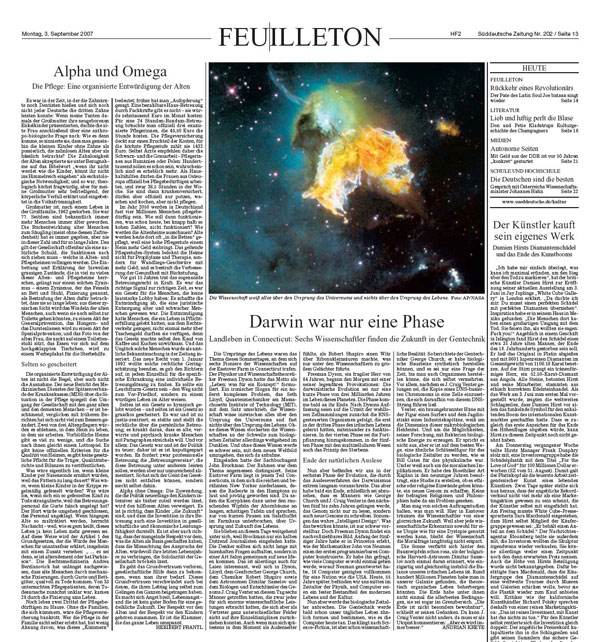
DARWIN WAS JUST A PHASE?(Darwin war nur eine Phase)Country Life in Connecticut: Six scientists find the future in genetic engineering??By Andrian Kreye
The origins of life were the subject of discussion on a summer day when six pioneers of science convened at Eastover Farm in Connecticut. The physicist and scientific theorist Freeman Dyson was the first of the speakers to talk on the theme: "Life: What a Concept!" An ironic slogan for one of the most complex problems. Seth Lloyd, quantum physicist at MIT, summed it up with his remark that scientists now know everything about the origin of the Universe and virtually nothing about the origin of life. Which makes it rather difficult to deal with the new world view currently taking shape in the wake of the emerging age of biology.
The roster of thinkers had assembled at the invitation of literary agent John Brockman, who specializes in scientific ideas. The setting was distinguished. Eastover Farm sits in the part of Connecticut where the rich and famous New Yorkers who find the beach resorts of the Hamptons too loud and pretentious have settled. Here the scientific luminaries sat at long tables in the shade of the rustling leaves of maple trees, breaking just for lunch at the farmhouse.
The day remained on topic, as Brockman had invited only half a dozen journalists, to avoid slowing the thinkers down with an onslaught of too many layman's questions. The object was to have them talk about ideas mainly amongst themselves in the manner of a salon, not unlike his online forum edge.org. Not that the day went over the heads of the non-scientist guests. With Dyson, Lloyd, genetic engineer George Church, chemist Robert Shapiro, astronomer Dimitar Sasselov and biologist and decoder of the genome J. Craig Venter, six men came together, each of whom have made enormous contributions in interdiscplinary sciences, and as a consequence have mastered the ability to talk to people who are not well-read in their respective fields. This made it possible for an outsider to follow the discussions, even if at moments, he was made to feel just that, as when Robert Shapiro cracked a joke about RNA that was met with great laughter from the scientists.
Freeman Dyson, a fragile gentleman of 84 years, opened the morning with his legendary provocation that Darwinian evolution represents only a short phase of three billion years in the life of this planet, a phase that will soon reach its end. According to this view, life began in primeval times with a haphazard assemblage of cells, RNA-driven organisms ensued, which, in the third phase of terrestrial life would have learned to function together. Reproduction appeared on the scene in the fourth phase, multicellular beings and the principle of death appeared in the fifth phase.
The End of Natural Selection
We humans belong to the sixth phase of evolution, which progresses very slowly by way of Darwinian natural selection. But this according to Dyson will soon come to an end, because men like George Church and J. Craig Venter are expected to succeed not only in reading the genome, but also in writing new genomes in the next five to ten years. This would constitute the ultimate "Intelligent Design", pun fully intended. Where this could lead is still difficult to anticipate. Yet Freeman Dyson finds a meaningful illustration. He spent the early nineteen fifties at Princeton, with mathematician John von Neuman, who designed one of the earliest programmable computers. When asked how many computers might be in demand, von Neumann assured him that 18 would be sufficient to meet the demand of a nation like the United States. Now, 55 years later, we are in the middle of the age of physics where computers play an integral role in modern life and culture.
Now though we are entering the age of biology. Soon genetic engineering will shape our daily life to the same extent that computers do today. This sounds like science fiction, but it is already reality in science. Thus genetic engineer George Church talks about the biological building blocks that he is able to synthetically manufacture. It is only a matter of time until we will be able to manufacture organisms that can self-reproduce, he claims. Most notably J. Craig Venter succeeded in introducing a copy of a DNA-based chromosome into a cell, which from then on was controlled by that strand of DNA.
Venter, a suntanned giant with the build of a surfer and the hunting instinct of a captain of industry, understands the magnitude of this feat in microbiology. And he understands the potential of his research to create biofuel from bacteria. He wouldn't dare to say it, but he very well might be a Bill Gates of the age of biology. Venter also understands the moral implications. He approached bioethicist Art Kaplan in the nineties and asked him to do a study on whether in designing a new genome he would raise ethical or religious objections. Not a single religious leader or philosopher involved in the study could find a problem there. Such contract studies are debatable. But here at Eastover Farm scientists dream of a glorious future. Because science as such is morally neutral—every scientific breakthrough can be applied for good or for bad.
The sun is already turning pink behind the treetops, when Dimitar Sasselov, the Bulgarian astronomer from Harvard, once more reminds us how unique and at the same time, how unstable the balance of our terrestrial life is. In our galaxy, astronomers have found roughly one hundred million planets that could theoretically harbor organic life. Not only does Earth not have the best conditions among them; it is actually at the very edge of the spectrum. "Earth is not particularly inhabitable," he says, wrapping up his talk. Here J. Craig Venter cannot help but remark as an idealist: "But it is getting better all the time".
Translated by Karla Taylor
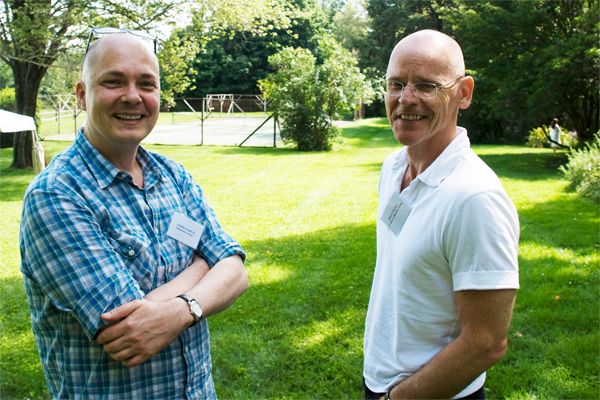
Andrian Kreye, Süddeutsche Zeitung
Jordan Mejias, Frankfurter Allgemeine Zeitung

RICHARD DAWKINS—FREEMAN DYSON: AN EXCHANGE
As part of this year's Edge Event at Eastover Farm in Bethlehem, CT, I invited three of the participants—Freeman Dyson, George Church, and Craig Venter—to come up a day early, which gave me an opportunity to talk to Dyson about his abovementioned essay in New York Review of Books entitled "Our Biotech Future".
I also sent the link to the essay to Richard Dawkins, and asked if he would would comment on what Dyson termed the end of "the Darwinian interlude".
Early the next morning, prior to the all-day discussion (which also included as participants Robert Shapiro, Dimitar Sasselov, and Seth Lloyd) Dawkins emailed his thoughts which I read to the group during the discussion following Dyson's talk. [NOTE: Dawkins asked me to make it clear that his email below "was written hastily as a letter to you, and was not designed for publication, or indeed to be read out at a meeting of biologists at your farm!"].
Now Dyson has responded and the exchange is below.
—JB
RICHARD DAWKINS [8.27.07] Evolutionary Biologist, Charles Simonyi Professor For The Understanding Of Science, Oxford University; Author, The God Delusion

"By Darwinian evolution he [Woese] means evolution as Darwin understood it, based on the competition for survival of noninterbreeding species."
"With rare exceptions, Darwinian evolution requires established species to become extinct so that new species can replace them."
These two quotations from Dyson constitute a classic schoolboy howler, a catastrophic misunderstanding of Darwinian evolution. Darwinian evolution, both as Darwin understood it, and as we understand it today in rather different language, is NOT based on the competition for survival of species. It is based on competition for survival WITHIN species. Darwin would have said competition between individuals within every species. I would say competition between genes within gene pools. The difference between those two ways of putting it is small compared with Dyson's howler (shared by most laymen: it is the howler that I wrote The Selfish Gene partly to dispel, and I thought I had pretty much succeeded, but Dyson obviously hasn't read it!) that natural selection is about the differential survival or extinction of species. Of course the extinction of species is extremely important in the history of life, and there may very well be non-random aspects of it (some species are more likely to go extinct than others) but, although this may in some superficial sense resemble Darwinian selection, it is NOT the selection process that has driven evolution. Moreover, arms races between species constitute an important part of the competitive climate that drives Darwinian evolution. But in, for example, the arms race between predators and prey, or parasites and hosts, the competition that drives evolution is all going on within species. Individual foxes don't compete with rabbits, they compete with other individual foxes within their own species to be the ones that catch the rabbits (I would prefer to rephrase it as competition between genes within the fox gene pool).
The rest of Dyson's piece is interesting, as you'd expect, and there really is an interesting sense in which there is an interlude between two periods of horizontal transfer (and we mustn't forget that bacteria still practise horizontal transfer and have done throughout the time when eucaryotes have been in the 'Interlude'). But the interlude in the middle is not the Darwinian Interlude, it is the Meiosis / Sex / Gene-Pool / Species Interlude. Darwinian selection between genes still goes on during eras of horizontal transfer, just as it does during the Interlude. What happened during the 3-billion-year Interlude is that genes were confined to gene pools and limited to competing with other genes within the same species. Previously (and still in bacteria) they were free to compete with other genes more widely (there was no such thing as a species outside the 'Interlude'). If a new period of horizontal transfer is indeed now dawning through technology, genes may become free to compete with other genes more widely yet again.
As I said, there are fascinating ideas in Freeman Dyson's piece. But it is a huge pity it is marred by such an elementary mistake at the heart of it.
FREEMAN DYSON [8.30.07] Physicist, Institute of Advanced Study, Author, Many Colored Glass: Reflections on the Place of Life in the Universe

Dear Richard Dawkins,
Thank you for the E-mail that you sent to John Brockman, saying that I had made a "school-boy howler" when I said that Darwinian evolution was a competition between species rather than between individuals. You also said I obviously had not read The Selfish Gene. In fact I did read your book and disagreed with it for the following reasons.
Here are two replies to your E-mail. The first was a verbal response made immediately when Brockman read your E-mail aloud at a meeting of biologists at his farm. The second was written the following day after thinking more carefully about the question.
First response. What I wrote is not a howler and Dawkins is wrong. Species once established evolve very little, and the big steps in evolution mostly occur at speciation events when new species appear with new adaptations. The reason for this is that the rate of evolution of a population is roughly proportional to the inverse square root of the population size. So big steps are most likely when populations are small, giving rise to the ``punctuated equilibrium'' that is seen in the fossil record. The competition is between the new species with a small population adapting fast to new conditions and the old species with a big population adapting slowly.
In my opinion, both these responses are valid, but the second one goes more directly to the issue that divides us. Yours sincerely, Freeman Dyson.
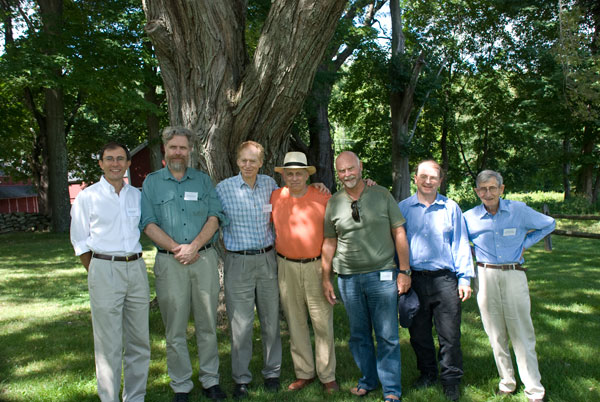
Dimitar Sasselov, George Church, Robert Shapiro, John Brockman,
J. Craig Venter,Seth Lloyd, Freeman Dyson


